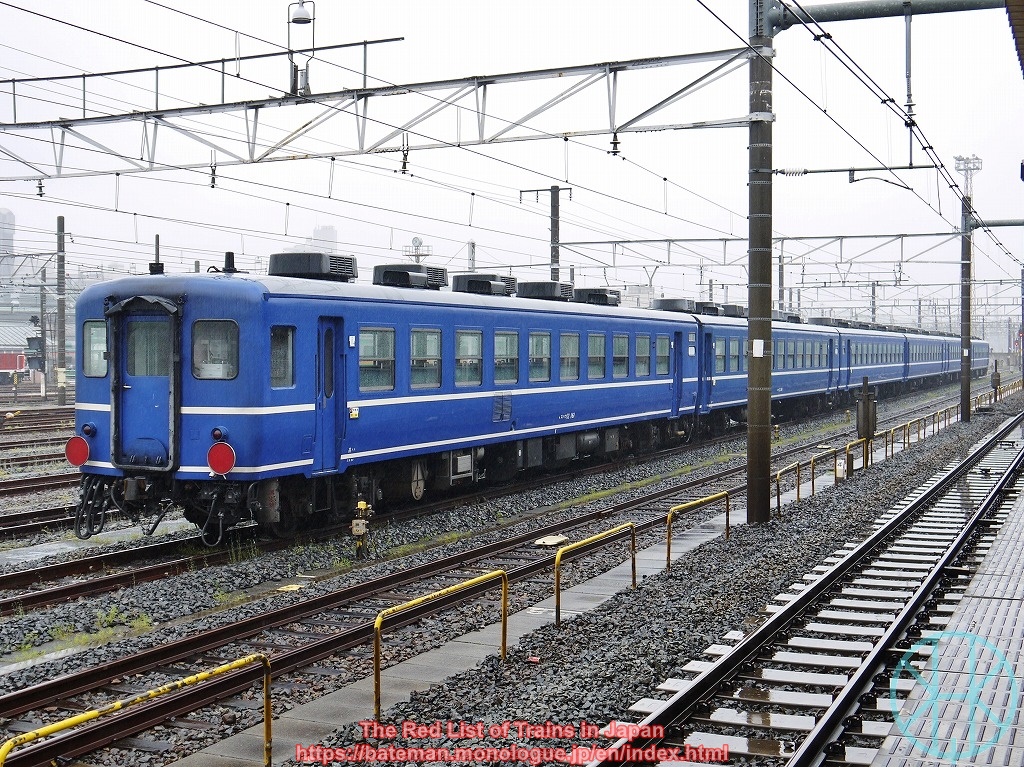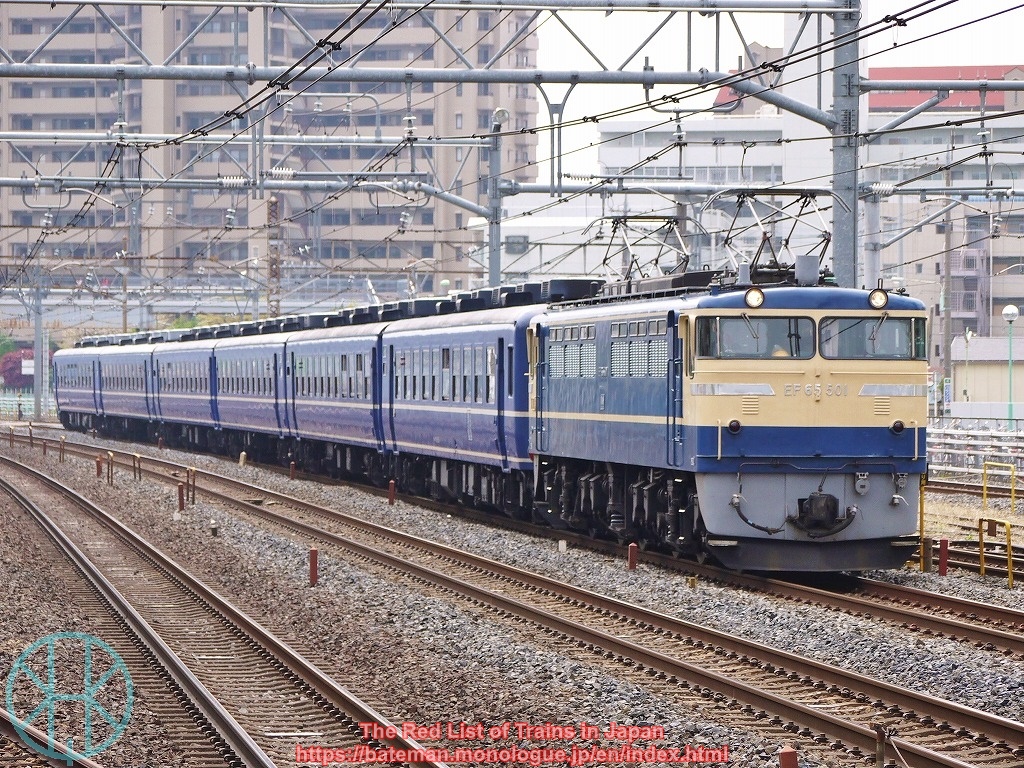JNR 12 series

Data (as of 6 Jul 2024)
| Status: | Critically Endangered |
| (JR East, JR West) | |
| Extinct | |
| (other JRs and Tarumi) | |
| Data Deficient | |
| (others) | |
| Constructed in: | 1969-71, 77-78 |
| Number built: | 603 |
| Registered: | 32 |
History
The 12 series is a type of coaching stock for express trains, and only standard class coaches were built. They are painted blue, but they are not classified as "Blue Train", as there is no sleeping coaches.
JNR had adopted the Modernisation Programme in 1959 that aims to replace all loco-hauled trains with electric and diesel multiple units, but the brand new coaches were mass-produced until 1978. According to JNR, this was because there were still so many coaches built in the 1930s and 40s and had to replace them. It was not a wise idea to introduce more expensive EMUs and DMUs for seasonal trains as there were many redundant locomotives.
The 12 series was epoch-making: each coach had air-conditioning, automatic sliding doors, bogies with air suspension and more efficient power supply. However, seating was ordinary transverse one because the series was designed as an express type. As JNR has later decided to expand limited express network, no new express type was developed after the introduction of 12 series. Today, the word "express" is out-of-date on JR network.
The 12 series was initially used for rail tours and seasonal trains especially trains to and from Osaka, where Expo '70 was held. Since 1973, they had been used for regular trains as well such as Express Kitaguni (Osaka - Aomori via Kanazawa and Niigata). They replaced older coaches for night trains, mostly express services. As many night trains were discontinued, most 12 series had been reallocated to regional stopping services since the 1980s. Some of them were converted to Joyful Trains for rail tours, and a few coaches were upgraded to Green Cars (first class) accordingly.
When JNR was privatised in 1987, the coaches were distributed to JR East, Central, West, Shikoku and Kyushu. JR companies replaced them in the early-1990s, as loco-hauled trains were not efficient. JR West inserted a few of them to diesel trains, but this attempt was unsuccessful. Most of them were scrapped by 2000 despite many of them being under 25 years old. A few were converted to trains for tourists including Okuizumo Orochi Train, but they were withdrawn as well.
JR companies resold some coaches to private railways: Chichibu Railway, Oigawa Railway, Tarumi Railway and Watarase Keikoku Railway. In addition, several more were resold to Tobu Railway and Wakasa Railway, though they are not registered for mainline use. These companies use or used the 12 series on trains for tourists. Furthermore, many other coaches were exported to Thailand and The Philippines.
Current Operations & Future Prospects
Today, JR East, JR West, Chichibu Railway, Oigawa Railway and Watarase Keikoku Railway own very few coaches. All but Watarase use them for steam trains.
JR West have been using six coaches for steam trains, but they will retire by 2024.
JR East dramatically refurbished the 12 series and uses them for steam trains in Gunma and Niigata areas. However, the company determines to scrap all locomotives by 2025, indicating that coaches are also subject to withdrawal.
Chichibu Railway and Watarase Keikoku Railway are also using them on trains for tourists, but struggling to maintain them. It is uncertain when or even if those owned by Oiagawa Railway can enter service.
Wakasa Railway in Tottori Prefecture has a plan to reinstate its three coaches for tourists, though it is not certain at present if it will really take place.
Photo

Rail tours of the 12 series were not uncommon in Tokyo until the early 2010s.
(Updated: 6 Jul 2024)
